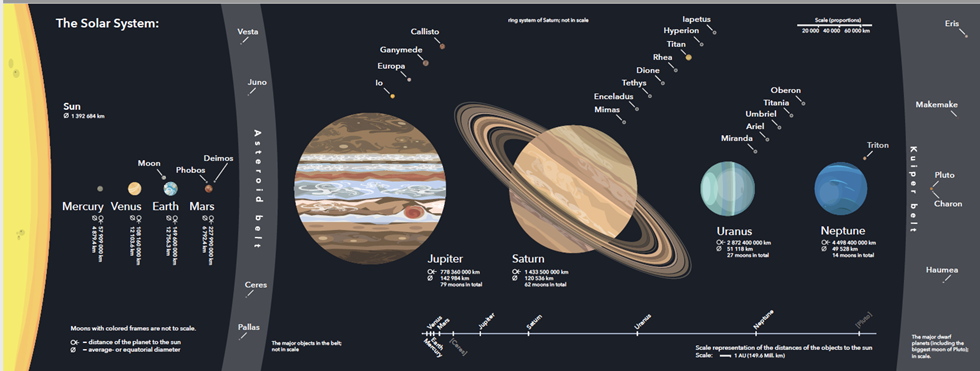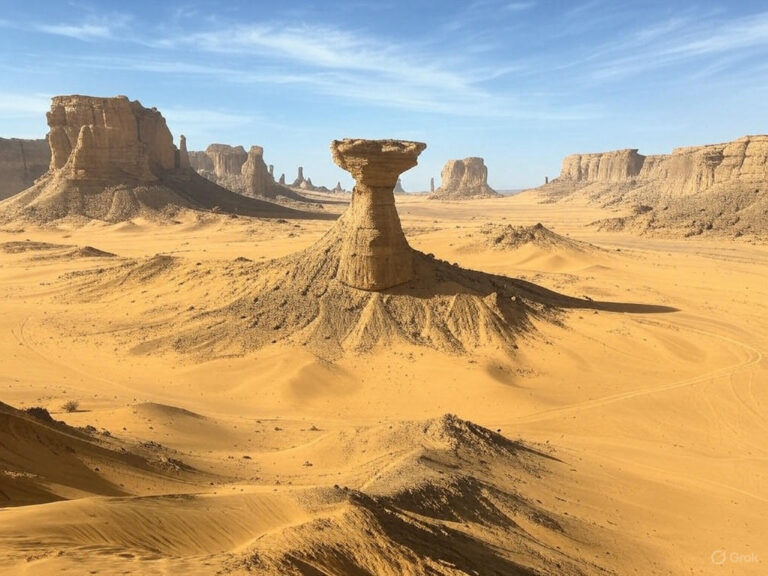Components of the Solar System UPSC
When we speak of the solar system, the first thing that comes to mind is the Sun and the eight planets. But it’s not limited to just that. Our solar system is a vast cosmic family that includes:
- The Sun (the central star)
- 8 planets (Mercury to Neptune)
- Dwarf planets (Pluto, Ceres, Eris, etc.)
- Satellites (like Earth’s Moon, or Jupiter’s Ganymede)
- Asteroids, meteors, comets, and many minor celestial bodies
This vast celestial network is held together by a single force — gravity.
☀️ Heliocentric Model — A Shift in Thinking
Earlier, people believed the Earth was at the center of the universe (the geocentric model). But in the 16th century, Nicolaus Copernicus proposed the heliocentric model:
“The Sun is at the center, and the Earth, like other planets, revolves around it.”
This was not just a scientific revolution — it was a philosophical one. It challenged the belief system of the era and laid the foundation for modern astronomy.
🌍 Orbital Patterns and the Ecliptic
Imagine the flat plane on which Earth revolves around the Sun — this is called the ecliptic plane. Most large celestial bodies orbit close to this plane.
- Planets orbit almost exactly within the ecliptic.
- Comets and Kuiper Belt Objects (like Pluto) often have tilted orbits, deviating from this flat plane.
- Planetary orbits are almost circular, while comets and some asteroids follow elliptical paths.
📐 Kepler’s Laws of Planetary Motion
Johannes Kepler, a German mathematician, gave us three golden rules to understand planetary motion:
- Law of Ellipses:
Every planet moves around the Sun in an ellipse, with the Sun at one of its foci. - Law of Equal Areas:
A line joining a planet and the Sun sweeps equal areas in equal time.
👉 This means planets move faster when closer to the Sun and slower when farther. - Law of Harmonies:
The square of the orbital period of a planet is proportional to the cube of the semi-major axis of its orbit.
👉 In simple terms: farther planets take longer to complete one orbit.
These laws transformed astronomy from descriptive to mathematical and predictive science.

Factual Data on Planets
| Planet | Surface Temp (°C) | Period of Rotation | Period of Revolution | Distance (AU) | Diameter (km) | Size Rank | Moons | Density (gm/cm³) | Gravity (m/s²) |
|---|---|---|---|---|---|---|---|---|---|
| Mercury | +427 | 58 days | 87 days | 0.4 | 4,878 | 0.38 | 0 | 5.4 | 3.7 |
| Venus | +480 | 243 days | 224 days | 0.7 | 12,104 | 0.95 | 0 | 5.2 | 8.9 |
| Earth | +22 | 23 hrs 56 mins | 365 days | 1 | 12,756 | 1.00 | 1 | 5.5 | 9.8 |
| Mars | -23 | 24.6 hrs | 687 days | 1.5 | 6,787 | 0.53 | 2 | 3.7 | 3.8 |
| Jupiter | -150 | 9.9 hrs | 11.9 years | 5.2 | 1,40,000 | 11.19 | 95 | 1.3 | 24.9 |
| Saturn | -180 | 10.7 hrs | 29 years | 9.6 | 1,16,000 | 9.46 | 274 | 0.7 | 10.4 |
| Uranus | -214 | 17 hrs | 84 years | 19.2 | 51,000 | 4.11 | 27 | 1.3 | 8.8 |
| Neptune | -220 | 16 hrs | 164 years | 30 | 48,000 | 3.88 | 14 | 1.6 | 11.1 |
| Pluto (dwarf) | -223 | 6.39 days | 248 years | 39.5 | 2,377 | 0.18 | 5 | 1.9 | 0.6 |
Points to Note
🟢 Inner vs Outer Planets
- Inner Planets (Mercury to Mars) have:
- Higher density (avg ~5 gm/cm³)
- Longer rotational periods (e.g., Venus – 243 days)
- Smaller size and fewer/no moons
- Outer Planets (Jupiter to Neptune) have:
- Shorter rotation periods (e.g., Jupiter – 9.9 hrs)
- Larger diameters (Jupiter – 1,40,000 km)
- Lower densities (e.g., Saturn – only 0.7 gm/cm³)
- Numerous moons (e.g., Saturn – 82)
🌡️ Temperature Extremes
- Venus is the hottest planet (+480°C) due to the runaway greenhouse effect, despite being farther from the Sun than Mercury.
- Pluto is the coldest (-223°C), being a distant dwarf planet in the Kuiper Belt.
🔄 Rotational Peculiarities
- Venus: Slowest rotation (243 Earth days), retrograde spin
- Jupiter & Saturn: Fastest rotators (~10 hrs), leading to oblate spheroid shapes
- Uranus: Rotates on its side (not shown in table but relevant to note)
🪐 Gravity and Size Observations
- Jupiter: Highest specific gravity (24.9 m/s²) and largest size rank (11.19 times Earth)
- Earth: Standard baseline for gravity (9.8 m/s²) and diameter (12,756 km)
- Pluto: Lowest gravity (0.6 m/s²), reinforcing its dwarf status
🌑 Moons
- Gas Giants dominate with moons:
- Jupiter: 95 moons
- Saturn: 274 moons (highest)
- Inner planets: Few or no moons
- Earth: 1
- Mercury & Venus: 0
📏 Period of Revolution vs Rotation
- Venus: Rotation period > revolution period, unique among planets.
- Outer planets: Long revolution periods (Neptune – 164 years, Pluto – 248 years), reflecting their distance from the Sun.




